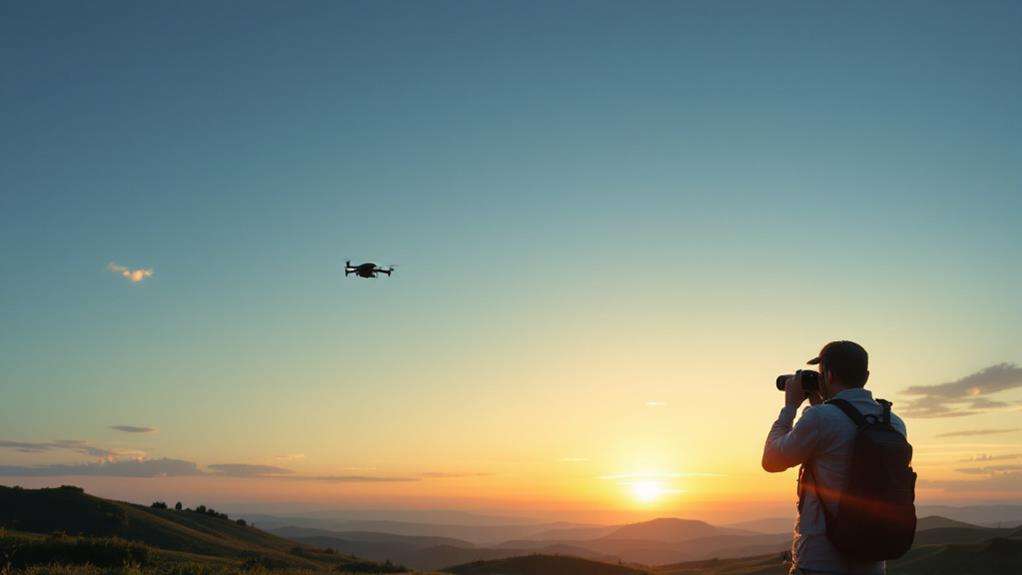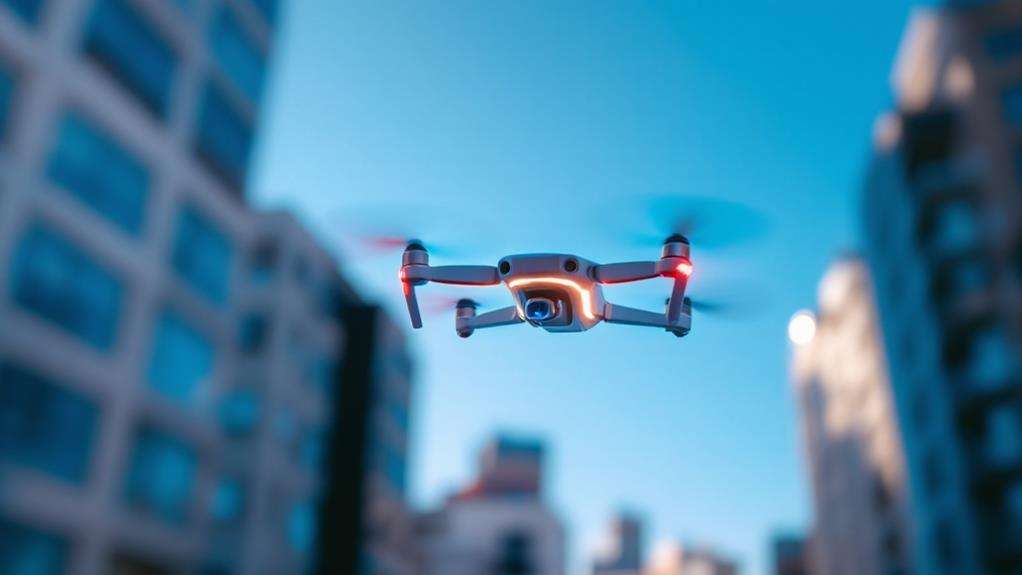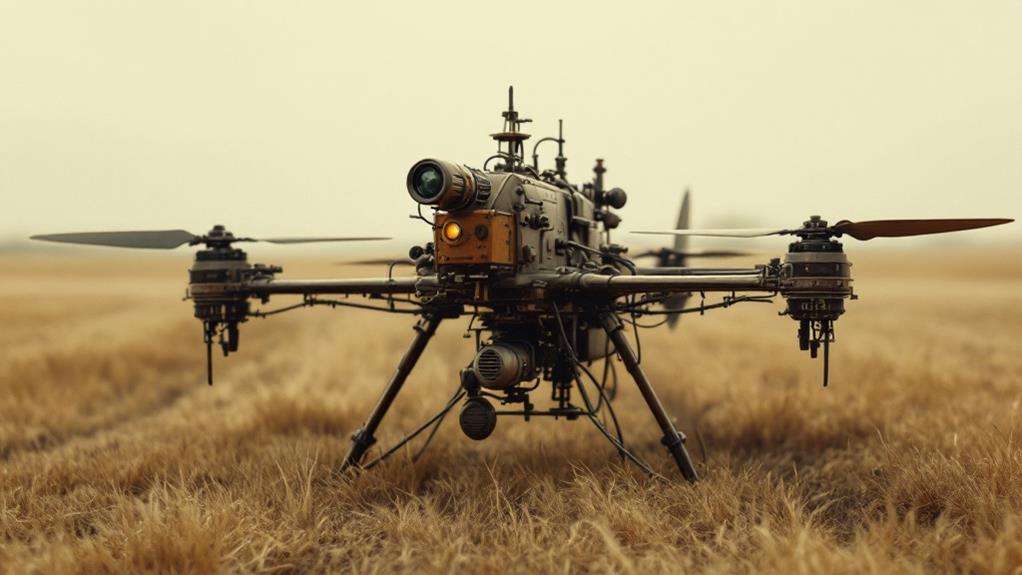What Can I Use Instead of Drones?
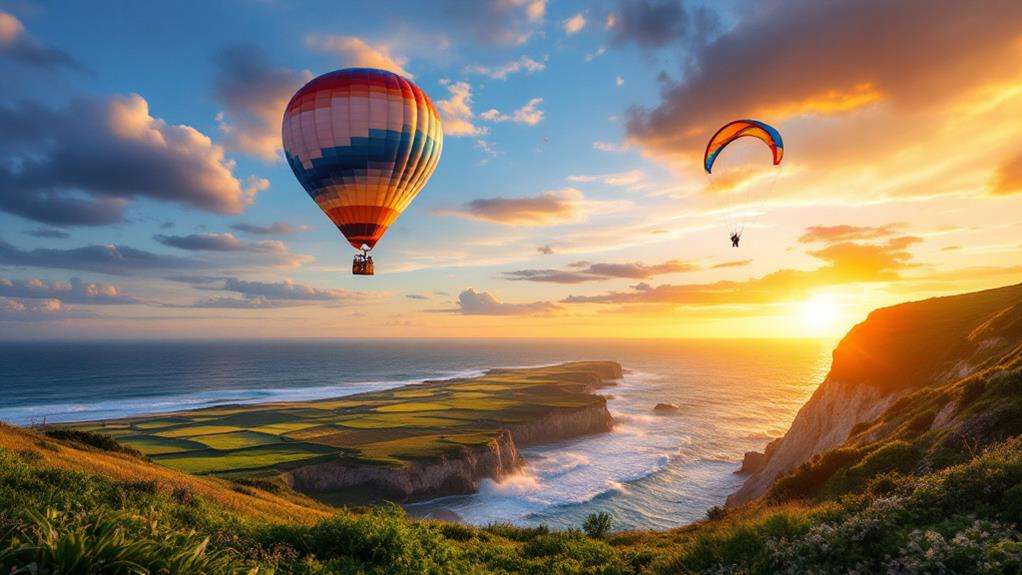
You have plenty of options besides drones for capturing aerial shots. Consider extension poles that mimic drone perspectives or invest in gimbal stabilizers for smooth, elevated footage. Remote-controlled helicopters offer flexibility and tethered balloons provide stable high-angle platforms. Cable cameras are excellent for shooting in close quarters or sensitive locations, ensuring stability and safety without the need for special licenses. Telephoto lenses allow for zooming in on distant objects, while boom poles simulate aerial views safely. These alternatives not only fulfill your filming needs but can also open up new, creative possibilities for unique shots and angles.
Key Takeaways
- Extension poles combined with gimbal stabilizers can mimic drone shots by providing elevated, stable camera angles.
- Cable cameras offer safe and consistent aerial shots in crowded or sensitive locations without the need for drone piloting skills.
- Remote-controlled helicopters can achieve unique angles and carry lightweight cameras for aerial filming.
- Tethered balloons serve as stable platforms for capturing high-angle shots safely and effectively.
- Telephoto lenses allow photographers to zoom in on distant subjects without needing elevation.
Legal and Regulatory Concerns
When considering alternatives to drones, it's crucial to understand the legal and regulatory concerns that come with drone operations. Navigating drone laws can be challenging, especially with the FAA's Part 107 regulations that commercial operators must follow. These include obtaining a remote pilot certificate and abiding by specific flight rules. If you're planning to use a drone in the U.S., you're likely to encounter significant no-fly zones. Airports, military bases, and especially national parks are areas where flying drones is prohibited. The National Park Service enforces stringent bans, reflecting a global trend where local restrictions on drone usage are growing. In addition, local municipalities may impose even stricter guidelines, requiring additional permits or designating specific operating areas. In urban areas like Amsterdam, drone operations face strict regulations or outright bans. This can severely limit your options if you plan to capture footage in such locations. Understanding and complying with local drone laws is essential. If you're caught violating these regulations, hefty fines can be imposed, especially for hobbyists who aren't fully aware of the rules. So, before considering drones, make sure you're familiar with the legal landscape. This knowledge will help you determine whether drones are viable for your project or if alternatives are needed.
Environmental and Weather Challenges
Environmental and weather challenges are crucial considerations when you're exploring alternatives to drones. Drone use can be severely affected by various environmental factors, which can limit their effectiveness and increase the risk of losing costly equipment. Cold weather significantly reduces drone battery life, cutting short operational time during frigid months. Moreover, strong winds can compromise drone stability, making it tough to maintain control and capture quality footage.
Other weather-related issues include rain and snow, which pose risks to drone electronics and cameras, often rendering them unusable in adverse conditions. High-altitude environments present another challenge, as decreased air density affects flight performance and stability. These environmental factors necessitate careful planning and consideration of alternative methods for achieving your aerial goals.
| Environmental Factor | Effect on Drone Use |
|---|---|
| Cold Weather | Reduced battery life |
| Strong Winds | Compromised stability |
| Rain and Snow | Damage to electronics and cameras |
| High Altitude | Affected flight performance |
| General Weather Sensitivity | Risk of equipment loss |
Considering these challenges helps you make informed decisions about when and where to use drones, or if perhaps, alternative technologies might be more reliable given the environmental circumstances.
Photography Without Drones
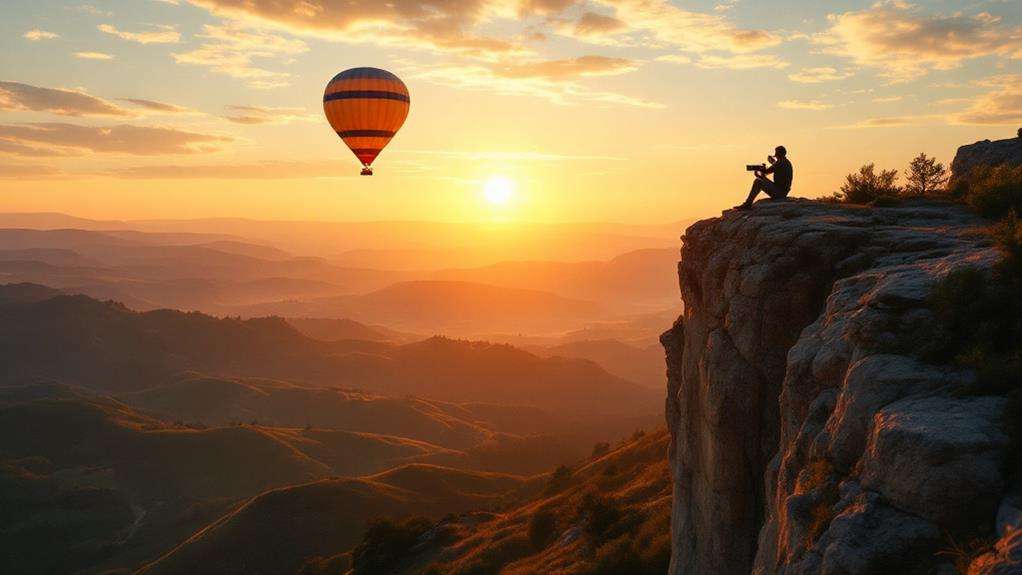
While drones face significant environmental challenges, there are plenty of innovative methods to capture stunning aerial photographs without them. You can achieve elevated perspectives by using extension poles, which mimic the heights typically captured by drones. This technique offers a simple but effective way to take breathtaking aerial shots without leaving the ground. Additionally, by experimenting with heights and angles, you can enrich your visual storytelling just as you would with drone technology.
High buildings, hotel windows, and observation decks are excellent places to snap aerial-like photos. These vantage points give you a bird's-eye view, allowing for expansive shots that resemble those taken with drones. Consider using a telephoto lens to capture distant objects up close, providing an alternative to traditional aerial photography.
To ensure stable footage, a gimbal stabilizer is a must-have. It keeps your camera steady, even at high altitudes, ensuring your shots remain smooth and professional-looking. For a bit of creativity, try capturing dynamic compositions by using vehicles or balloons. These methods offer unique and varied perspectives without relying on drones.
Equipment for Aerial Shots
Elevate your photography game with the right equipment for capturing stunning aerial shots. You don't need drones to get those breathtaking views from above. Start by using extension poles to achieve elevated camera angles, giving you a perspective similar to drone shots. This simple tool can help you reach new heights without leaving the ground.
Consider utilizing gimbal stabilizers to enhance your camera's stability, ensuring smooth and dynamic footage even from elevated positions. They're essential for maintaining that professional look in your aerial-like shots. If you're in an urban setting, take advantage of high buildings, observation decks, or parking garages. These spots serve as excellent vantage points, allowing you to capture impressive images from above with ease.
Telephoto lenses are another great tool, enabling you to shoot close-ups of distant or high objects. They mimic some drone perspectives by letting you zoom in on details without physically elevating your camera. For more maneuverability, try remote-controlled helicopters equipped with lightweight cameras. They offer flexibility in capturing unique angles from the sky. By leveraging these alternatives, you can achieve stunning aerial photography without ever needing a drone.
DIY Filming Techniques
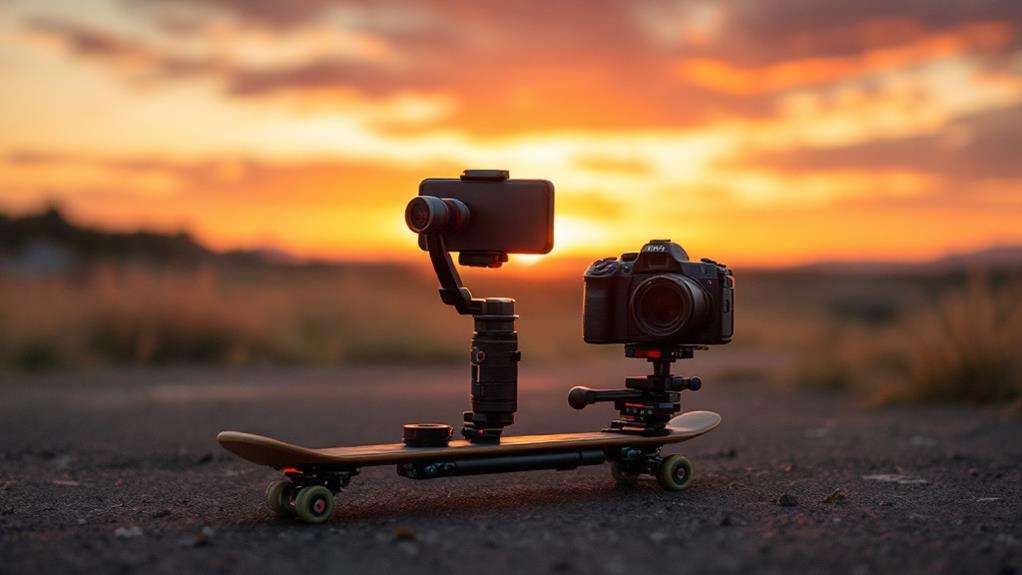
Capturing stunning aerial shots doesn't always require expensive equipment or complex gadgets. You can achieve elevated camera angles and find alternatives for capturing aerial perspectives with some clever DIY filming techniques. Start with extension poles combined with gimbal stabilizers to stabilize your shots and enhance image quality. This setup gives you the ability to reach new heights without needing a drone.
Another option is remote-controlled helicopters. These can carry lightweight cameras and serve as a flexible alternative for capturing aerial perspectives, especially in areas where drones are restricted. If you're looking for stability, tethered balloons offer a creative solution. They provide a stable platform for high-angle shots without the complexities of drone operation.
For those who want more immersive footage, try mounting a 360-degree camera on a long pole. This can simulate drone footage, giving you expanded creative options without leaving the ground.
| Technique | Use Case | Advantage |
|---|---|---|
| Extension Poles + Gimbal | Elevated angles | Stability and quality |
| RC Helicopters | Drone-restricted areas | Flexibility |
| Tethered Balloons | High-angle shots | Stability |
| 360-Degree Cameras on Poles | Immersive footage | Simulates drone shots |
Explore these techniques to creatively capture aerial perspectives without the need for drones.
Cable Cameras Explained
Cable cameras offer a versatile solution for filmmakers seeking aerial shots in areas where drones can't be used, such as crowded urban environments or sensitive locations like national parks. They're the Best Alternative for capturing stunning footage in places where drone use is either restricted or impractical. Unlike drones, cable cameras can safely operate in confined spaces and near people, eliminating many of the safety concerns you might face with aerial drones.
These systems excel at providing consistent, reproducible camera movements, making them ideal for challenging filming environments where precision is crucial. With cable cameras, you don't need to worry about registration or obtaining special piloting certificates, simplifying the process significantly. This ease of use allows you to focus more on the creative aspects of your project.
One standout option is the Wiral LITE cable camera kit. This system enhances usability and setup efficiency, offering creative aerial perspectives without the complexities tied to drone operation. It's perfect for filmmakers who want to capture unique shots without the hassle of drone regulations. When drones aren't an option, cable cameras truly are the Best Alternative, offering unmatched flexibility and precision.
Safety and Best Practices
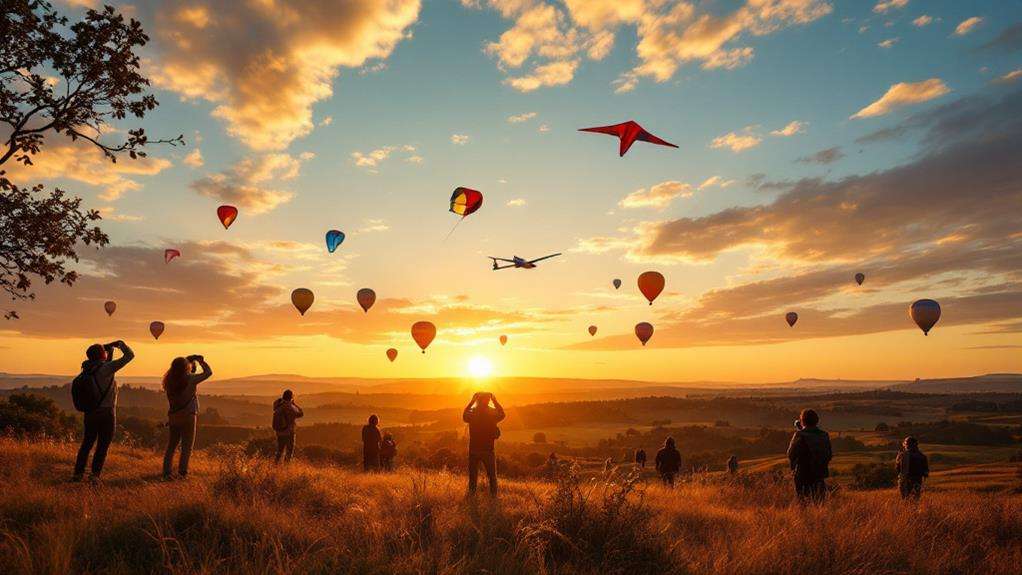
While cable cameras offer a fantastic alternative to drones, ensuring safety and following best practices is paramount for any filming method. First and foremost, always prioritize safety by checking that all your equipment is securely fastened and properly balanced. This prevents accidents and injuries during your shoot. Pre-shoot checks are crucial—inspect the stability and functionality of your equipment to avoid malfunctions that could disrupt filming.
Be acutely aware of your surroundings, especially when using elevated platforms like ladders or cherry pickers. This awareness helps prevent hazards and ensures you and your crew stay safe. It's also a good idea to follow industry best practices. For example, having a spotter when you're filming from heights or confined spaces can greatly enhance safety and professionalism.
Careful planning is key to a successful shoot. Consider the environment and any potential risks associated with your chosen filming techniques. This proactive approach helps you mitigate any safety issues that might arise. By adhering to these guidelines, you not only protect yourself but also ensure that your filming process is smooth, professional, and, most importantly, safe.
Creative Filming Solutions
In the realm of creative filming solutions, exploring alternatives to drones can unlock a world of dynamic possibilities. Cable cameras are an excellent choice when you need stable and versatile shots in urban or confined spaces. They offer dynamic aerial perspectives without the hassle of permits or registrations, making them ideal for cityscapes or event coverage. If you're aiming for elevated angles, try using boom poles or long sticks. These tools can simulate aerial shots, giving you the control over safety and stability that drones sometimes lack.
For ground-level shots that require smooth motion, handheld gimbals like the DJI Osmo are your go-to. They provide that sleek, drone-like movement, perfect for capturing dynamic footage without worrying about drone regulations. If you're after aerial views but want to avoid the complexities of drone operation, consider remote-controlled helicopters. These can carry lightweight cameras and offer incredible flexibility.
Tethered balloons also present a unique solution for high-angle perspectives. They're perfect for shooting in crowded or sensitive areas, sidestepping many of the restrictions drones face. With these creative solutions, you can capture compelling footage without relying on drones.

